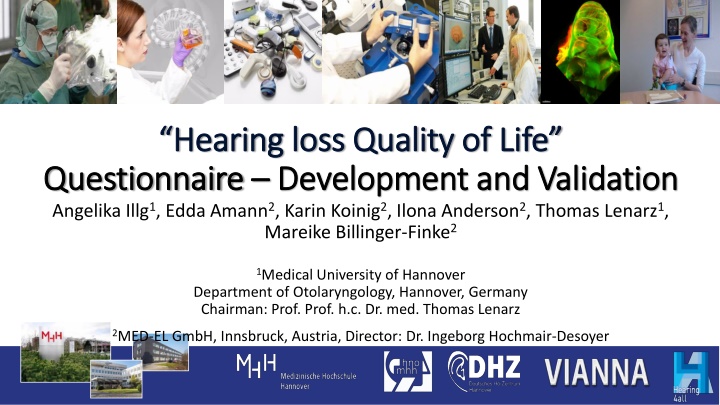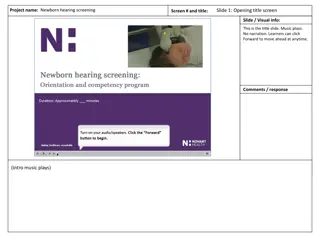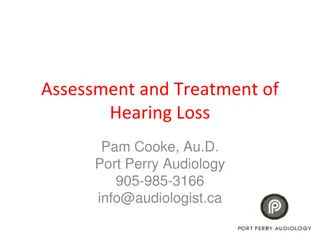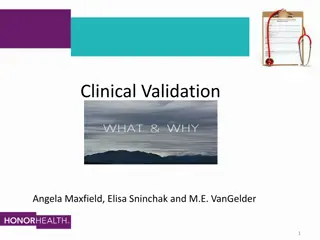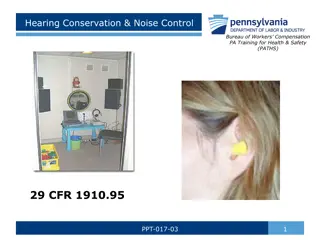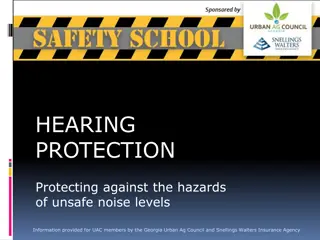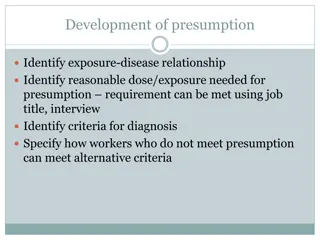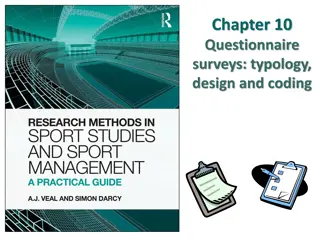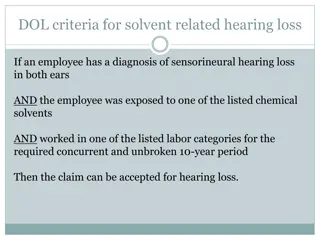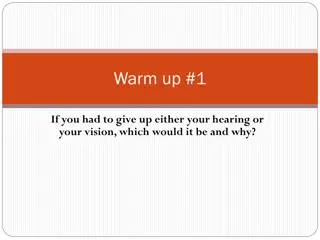Development and Validation of Hearing Loss Quality of Life Questionnaire
This study focuses on the development and validation of a new questionnaire to assess the quality of life in individuals with hearing loss. Experts from various disciplines collaborated to create a comprehensive questionnaire based on the ICF model, aiming to provide insight into the impact of hearing loss on different aspects of life. The preliminary questionnaire consists of 23 items grouped into Body Functions, Activities & Participations, and Environmental Factors, with promising results from initial validation tests.
Download Presentation

Please find below an Image/Link to download the presentation.
The content on the website is provided AS IS for your information and personal use only. It may not be sold, licensed, or shared on other websites without obtaining consent from the author.If you encounter any issues during the download, it is possible that the publisher has removed the file from their server.
You are allowed to download the files provided on this website for personal or commercial use, subject to the condition that they are used lawfully. All files are the property of their respective owners.
The content on the website is provided AS IS for your information and personal use only. It may not be sold, licensed, or shared on other websites without obtaining consent from the author.
E N D
Presentation Transcript
Hearing Hearing loss loss Quality Quality of of Life Development and Validation Life Questionnaire Questionnaire Development and Validation Angelika Illg1, Edda Amann2, Karin Koinig2, Ilona Anderson2, Thomas Lenarz1, Mareike Billinger-Finke2 1Medical University of Hannover Department of Otolaryngology, Hannover, Germany Chairman: Prof. Prof. h.c. Dr. med. Thomas Lenarz 2MED-EL GmbH, Innsbruck, Austria, Director: Dr. Ingeborg Hochmair-Desoyer
Development of a QOL based on the ICF Model New questionnaire to assess quality of life in hearing loss Consideration of the ICF Model Review of existing QOL questionnaires in the field Initial formulation of the items by a multidisciplinary group of experts Audiology Psychology Hearing and speech therapy Review of items by a linguist for linguistic/grammatical formulation.
Development of a Questionnaire QOL based on the ICF Model First test questionnaire Test if face validity Cog. Interviews with CI users (n = 11) Comprehensibility of the items Importance of the items Blind spots Comments evaluation Creation of an initial questionnaire Face validity Example: Are you excluded because of your hearing loss when you are with others? never - ever
Preliminary questionnaire with 23 questions 23 items with 7-point Likert scale Possibility to group the items according to ICF categories: Body Functions (8 Items) Activities & Participations (11 Items) Environmental Factors (2 Items) 2 items were considered important inital, but could not be assigned to the ICF
Subjects were asked to complete the HL-QOL questionnaire and the NCIQ (Hinderink et al., 2000). Subjects were also asked to complete the HL-QOL questionnaire a second time within 2 to 4 weeks. N = 123 persons clicked on the link for the questionnaire. 84 subjects answered the HL-QOL completely. Validation Female n=48 Male n=35 Missing n=1 Life age mean 56,2 years (22-80 years)
Validation - Results Item analysis No floor effects No ceiling effects; except for items 9 (41.7%), 14 (51.2%), and 19 (42.9%) Item difficulty index ranged from 0.36 0.88 (satisfactory 0.3-0.9) Item diskrimination ranged from 0.51 0.87 (recommended 0.5) Reliability good reliability with high internal consistency (Cronbach`s , 0.956; Guttman`s split-half-coefficient, 0.90; A value of = 0.96 indicates very high internal consistency) Test-Retest Realibility (1. & 2. HL-QOL completed) n=63; r = 0.914; p < 0.001
Validiation - Results Construct validity Principal component analysis: 2 factor solution, ca 70% Variance explained Solution supported by KMO test: 0.812 Barlett test for sphericity: p < 0.001 High inter-item correlations Criterion validity High positive correlation with NCIQ (n = 74; r = .866; p < 0.001) Items 14 and 19 are removed from the questionnaire
Final questionnaire HL-QOL HL-QOL Score 21 Items very low <30 low 30 to 60 middle 60 to 90 1 total result high 90 to 120 very high 120 to 147 Possibility to group the items according to ICF categories: Body Functions (8 Items) Activities & Participations (11 Items) Environmental Factors (2 items)
www.medel.com Rehamaterialien Rehamaterialien Thank you for your attention! Illg.angelika@mh-hannover.de Illg et al. 2023, DOI 10.3389/fauot.2023.1207220
